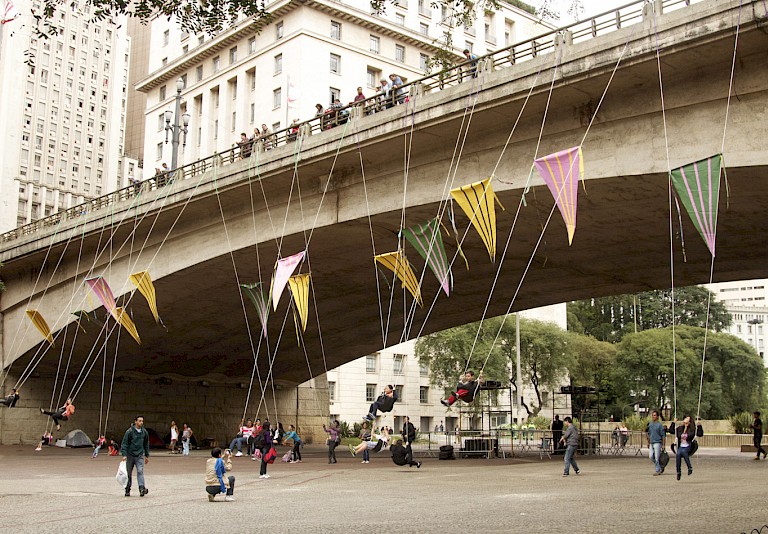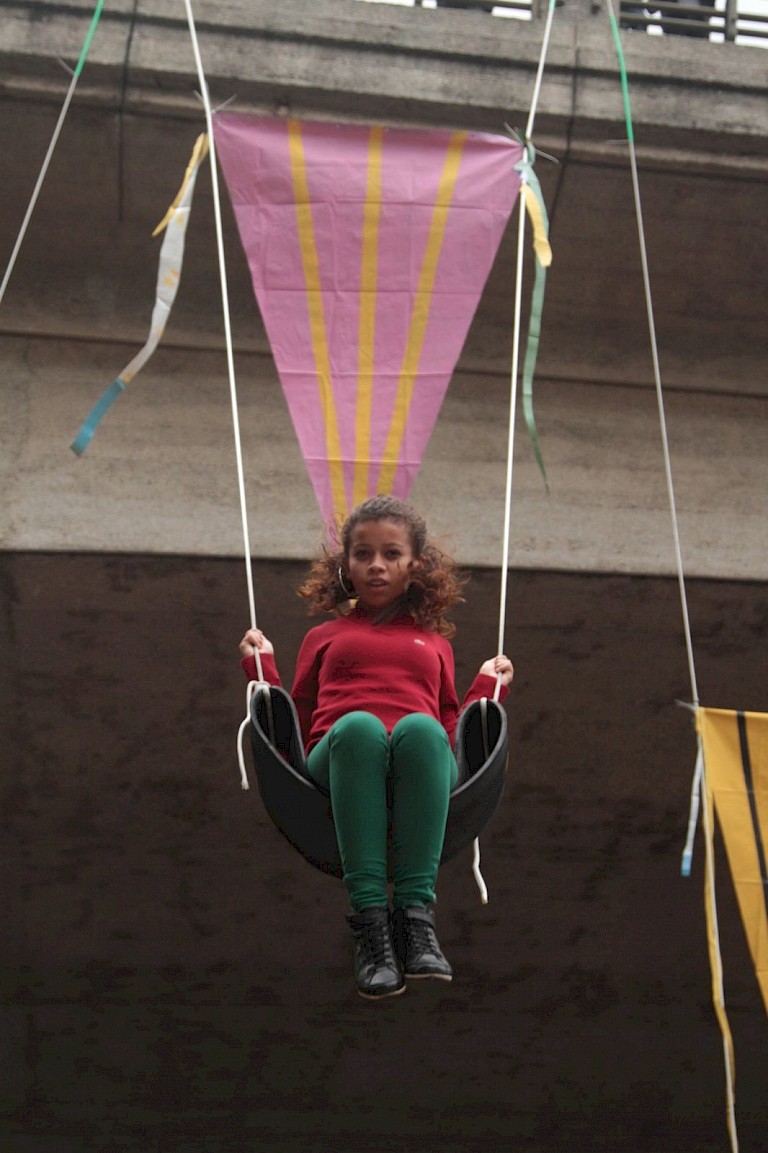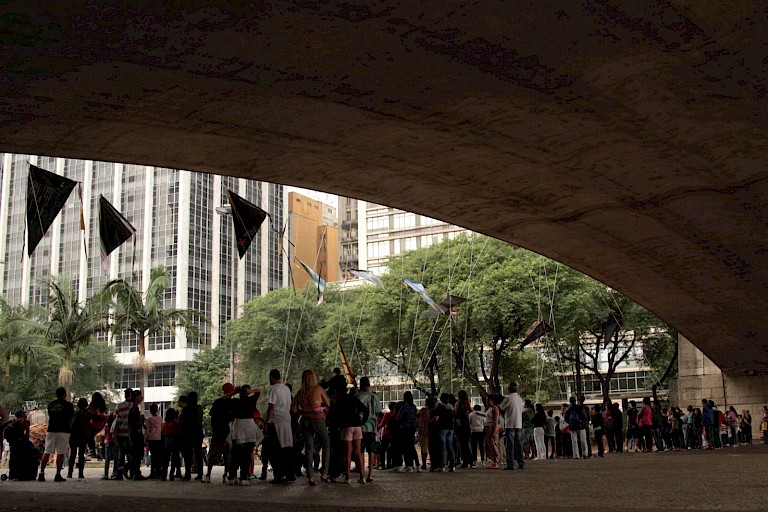



And even made available on the internet the whole process to build them. Providing that any group can replicate the project in other places, making your own neighborhood. The installation was carried out in the “Festival Baixo Centro” (independent festival of art and culture in São Paulo) during the 2013 edition of the “Virada Cultural” (event sponsored by the Government and City Hall, which provides a wide range of musical, theatrical and artistic attractions in a period uninterrupted 24 hours), and in 2015 as part of the event "month of Independent Culture".
The collective, in announcing the work on your website is age appropriate recommendation to play in the installation: toy for children from 0 to 99 years. And in the period in which the installation was present in the city was just that it was possible to see all took advantage of the swings and played much regardless of age or social class, there was even the participation of many homeless people. It was possible in some time to see a long line with people eager to enjoy the work, who helped push the swing, and many onlookers surrounding the place to enjoy the facility, in any case, both the interaction as the assessment is made possible.
With the work, the playful view of the city was not only possible, but also palpable. Amid gray and charged landscape of concrete stiffness and vertical buildings, people were mild, and the playful swing seemed to fly in the midst of “Vale do Anhangabaú” and each time felt more comfortable in that condition, most drove their bodies to achieve greater heights.
And even made available on the internet the whole process to build them. Providing that any group can replicate the project in other places, making your own neighborhood. The installation was carried out in the “Festival Baixo Centro” (independent festival of art and culture in São Paulo) during the 2013 edition of the “Virada Cultural” (event sponsored by the Government and City Hall, which provides a wide range of musical, theatrical and artistic attractions in a period uninterrupted 24 hours), and in 2015 as part of the event "month of Independent Culture".
The collective, in announcing the work on your website is age appropriate recommendation to play in the installation: toy for children from 0 to 99 years. And in the period in which the installation was present in the city was just that it was possible to see all took advantage of the swings and played much regardless of age or social class, there was even the participation of many homeless people. It was possible in some time to see a long line with people eager to enjoy the work, who helped push the swing, and many onlookers surrounding the place to enjoy the facility, in any case, both the interaction as the assessment is made possible.
With the work, the playful view of the city was not only possible, but also palpable. Amid gray and charged landscape of concrete stiffness and vertical buildings, people were mild, and the playful swing seemed to fly in the midst of “Vale do Anhangabaú” and each time felt more comfortable in that condition, most drove their bodies to achieve greater heights.
The work was thought to be something simple to implement and at the same time reuse materials, characteristics that have always been present in Basurama projects. The intention was also to honor two great architects, artists, designers Elvira de Almeida and Lina Bo Bardi, who created this kind of places that awaken the playful and creative. With these inspirations created the site-specific which brings the interaction through the balance of play.
All copyright belongs to Shanghai Academy of Fine Arts, Shanghai University.



